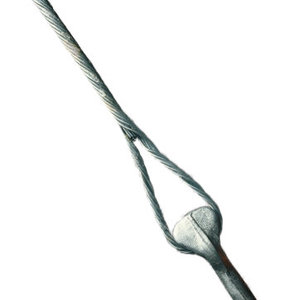
The Vaca Muerta shale formation enabled Argentina to export its first LNG (liquid natural gas) shipment in 2019, using a floating liquefaction unit. This was driven by the rapid growth of natural gas production. Argentina has been working to expand its LNG export capacity, including its plans for a major onshore LNG plant in Bahia Blanca. The country also collaborated with YPF and Petronas to establish an LNG export terminal. Additionally, Golar LNG, in partnership with Pan American Energy, is planning to deploy a floating LNG vessel to monetize gas from Vaca Muerta. The project is expected to commence exports by 2027. Argentina is also working on establishing a supportive regulatory environment. This could include providing tax benefits and a clear regulatory framework to encourage infrastructure development. Cryogenic guy deadends are crucial for stabilizing structures supporting LNG production and storage.
LNG is stored and transported at temperatures that demand cryogenic insulation to reduce heat ingress. Guy deadends ensure structural integrity, operational continuity, and scalability. Cryogenic guy deadends are crucial for power line stabilization, securing loading jetties for LNG carriers, and anchoring gas pre-treatment facilities. The pipe anchoring systems ensure grid reliability to prevent shutdowns. This helps improve efficiency in storage tanks and during LNG carrier loading. Standard metal supports conduct cold, which leads to ice buildup, embrittlement, and structural failure. Cryogenic guy deadends reinforce support masts for LNG storage tank roofs. They prevent deformation due to thermal contraction and expansion. They serve in LNG storage tanks, pipeline networks, and FLNG vessel mooring systems.
Cryogenic guy deadends supporting Argentina’s LNG production and export.
Guy deadends are mechanical terminations used to anchor and tension guy wires at utility poles. They secure the end of a guy wire to a pole or anchor. Cryogenic guy deadends also provide stable tension without slipping, which is crucial for keeping infrastructure steady. They enable the expansion of pipeline infrastructure for projects like the Vaca Muerta. The deadends ensure Argentina’s LNG supply chain is secure and sound. Guy deadends help Argentina meet its growing energy export goals. This is done by stabilizing remote transmission poles and fortifying coastal export facilities. Here are the functions of cryogenic guy deadends in Argentina’s LNG production and exports.

- Stabilizing electrical infrastructure—LNG plants and processing terminals need reliable power infrastructure. Guy deadends anchor guy wires on power distribution poles feeding electricity to critical LNG equipment. They also stabilize lighting towers, control systems, and substations in remote areas.
- Reinforcing transmission lines—getting LNG to liquefaction terminals needs long-distance transmission lines and high-voltage substations. Guy deadends provide tension on support cables that hold poles in place.
- Enabling scalable grid expansion—pipe restraints allow for fast installation of temporary segments. They also simplify tensioning during project building and reduce maintenance needs.
- Withstanding coastal and marine environments, export terminals face challenges such as salt corrosion, high winds, and storm surges. Guy deadends help anchor communication towers and loading facility structures. They also support emergency backup power systems at coastal terminals.
- Enhancing worker safety—high-quality pipe restraints deliver consistent strain levels and prevent guy wires from loosening over time.
The potential of increased investments for Argentina’s LNG
Increased investments in the liquefied natural gas sector could set Argentina as a global game changer. By capitalizing on the investments, Argentina can triple gas output, build world-class LNG terminals, and fuel global energy markets during a critical transition period. Discussed below is the potential of Argentina’s LNG with increased investment.

- Untapped reserves—the investments can help the country ramp up exploration and production. This could unlock billions of cubic meters of gas annually.
- Infrastructure expansion—the availability of new or expanded pipelines can move more gas from the interior to the coastal LNG terminals. Investing in gloating LNG vessels can provide mobile and scalable options. These terminals could turn Argentina into a year-round LNG supplier.
- Global demand—expanded export capacity in Argentina could secure long-term supply contracts with major global buyers. Its close proximity to Atlantic shipping routes provides a natural logistical advantage.
- Investor confidence and energy policy reforms—the government is pushing pro-market energy reforms and encouraging foreign direct investment. This could provide tax breaks, investment security, and stable regulatory frameworks. This could reduce risk for foreign investors and speed up project financing.
